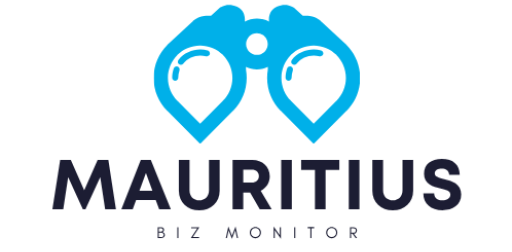The world of online shopping is rapidly evolving with the rise of artificial intelligence. Consumers now have access to advanced AI Shopping Tools designed to simplify decision-making, provide personalized recommendations, and streamline the entire purchasing process. Two of the leading contenders in this space are Google and OpenAI, both offering unique approaches to enhancing the online shopping experience.
AI Shopping Tool: Personalization Capabilities
One of the primary advantages of an AI Shopping Tool is personalization. Google leverages extensive user data from search history, Gmail, and YouTube to deliver highly tailored shopping suggestions. By analyzing past purchases and browsing patterns, Google can predict products that a user is likely to be interested in, creating a highly customized shopping experience.
OpenAI, on the other hand, uses advanced natural language processing to understand nuanced queries. Shoppers can ask detailed questions, and OpenAI generates intelligent product recommendations, sometimes with comparisons or alternative options. This allows users to interact in a conversational manner, making the shopping experience feel more intuitive and human-like.
AI Shopping Tool: Speed and Efficiency
Another critical factor is speed. Google’s AI tools are embedded directly into its search engine, allowing users to receive instant results while browsing or comparing products. The AI quickly filters through millions of items to highlight the most relevant options, saving time and effort.
OpenAI also offers efficiency, but in a slightly different way. Its conversational interface allows users to ask complex questions and receive synthesized answers, which can reduce the need to visit multiple websites. This approach helps users make informed decisions faster, especially when looking for detailed comparisons or product reviews.
AI Shopping Tool: Integration with Shopping Platforms
Integration is a key consideration for any AI Shopping Tool. Google seamlessly connects with Google Shopping, various e-commerce sites, and even local retailers, providing a comprehensive ecosystem for online purchases. Users can check availability, compare prices, and even complete transactions within Google’s platform.
OpenAI’s tools, while not tied to a single shopping ecosystem, can integrate with multiple platforms through APIs or browser extensions. This flexibility allows users to access AI assistance across different websites, creating a more versatile shopping companion, albeit with slightly less immediate transactional capability.
Accuracy of Recommendations
The effectiveness of any AI Shopping Tool largely depends on the accuracy of its recommendations.
Google’s AI excels at suggesting products based on extensive datasets collected over years. Its predictive models can anticipate user preferences with high precision, often recommending items that align closely with past behaviors and interests.
OpenAI, while newer in the shopping domain, uses conversational AI to understand user intent deeply. By interpreting natural language queries, it can provide nuanced suggestions that consider context, quality, and alternative options. According to a recent [Forbes analysis]on AI in e-commerce, this level of understanding can make OpenAI particularly useful for complex shopping decisions.
AI Shopping Tool: Ease of Use
User experience is critical for adoption. Google integrates its AI seamlessly into familiar platforms like Google Search, Maps, and Shopping, making it intuitive for users who already rely on these services.
OpenAI offers a conversational interface where users type or speak their requests naturally. This approach allows for more detailed queries, but it may require a slight learning curve for users unfamiliar with AI chatbots. Despite this, many find the interaction engaging and more aligned with human communication.
Cost and Accessibility
Cost is another important consideration for shoppers. Google’s AI Shopping Tools are generally free to use, embedded within its existing services.
OpenAI may require subscription plans for access to its most advanced features. However, this cost is often justified by the depth and quality of personalized recommendations it provides. Users must weigh the benefits of more intelligent, conversational guidance against potential fees.
Customer Trust and Reliability
The reliability of an AI Shopping Tool is essential for gaining user trust. Google benefits from years of accumulated data and a well-established reputation, which reassures users about the accuracy and safety of its recommendations.
OpenAI, while newer, focuses on transparency and explainability in its AI models. Users can ask follow-up questions and clarify suggestions, creating a sense of control and confidence in the results. This interactive approach can foster trust, particularly for shoppers making high-value or complex purchases.
Compatibility Across Devices
Google’s AI integrates seamlessly with multiple devices, including smartphones, tablets, and desktop platforms. Whether users are searching from a laptop at home or a mobile device on the go, the experience remains consistent and efficient.
OpenAI’s solutions are also versatile, accessible through web browsers, apps, and certain integrations with e-commerce platforms. This ensures that users can interact with the AI wherever they prefer, though it may require additional setup compared to Google’s built-in ecosystem.
Global Reach and Language Support
Global accessibility is another key factor. Google offers extensive language support, making its AI Shopping Tool practical for users around the world. Recommendations can be tailored not just by location but also by cultural preferences and local trends.
OpenAI provides multilingual capabilities as well, though support varies depending on the model or platform used. Users in non-English speaking regions may find Google’s AI more immediately practical, while OpenAI continues to expand its international usability.
Future Developments
Both Google and OpenAI are continually improving their AI shopping capabilities. Google is leveraging enhanced machine learning algorithms and broader datasets, while OpenAI is refining conversational AI models to better understand user intent and context.
For a closer look at how AI is reshaping business and consumer behavior, check our analysis on Economic Activity Mauritius.
Conclusion
The choice between Google and OpenAI as an AI Shopping Tool depends on user priorities. Google excels in seamless integration, speed, and global accessibility, while OpenAI shines in conversational intelligence and personalized recommendations for complex queries.
Ultimately, both platforms are pushing the boundaries of what AI can offer to shoppers. By understanding their strengths and limitations, users can make informed decisions and enjoy a more efficient, insightful, and personalized shopping experience.




